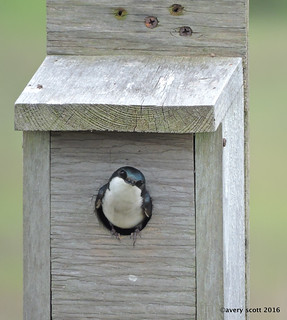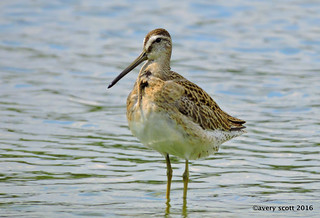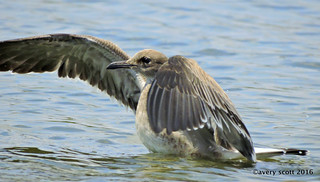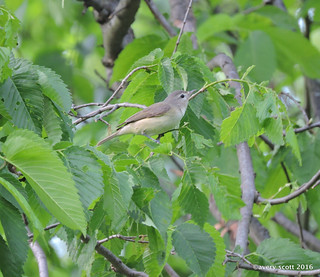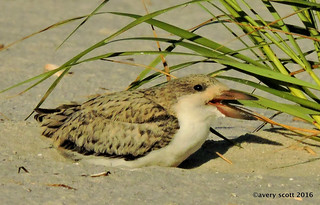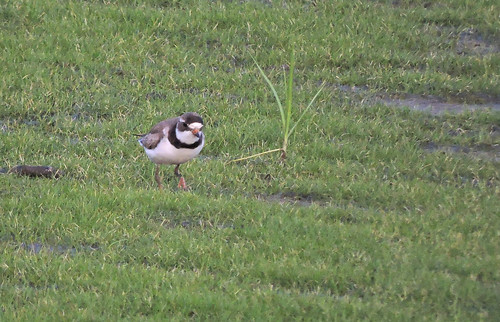As I write, I have just returned from Albany, New York, where the 68th annual New York Birder's Conference, hosted by the New York State Ornithological Association (NYSOA) and the Hudson-Mohawk Bird Club, was held. In this post, I will not attempt to summarize each workshop and presentation, but rather I will summarize for your each birding trip I made. Let's start on Day 1.
Day 1: October 2
I went to a trip led by a Hudson-Mohawk Bird Club member at the Albany Pine Bush. The Pine Bush is rare in that it is an inland pine barren, filled with pitch pine and scrub oak. Unfortunately on this day, it was not so full of birds. I got no pictures, but two lifers. The first was a
Black Vulture--actually, three of them--soaring over the parking lot. The second was an
Eastern Towhee, a bird that has artfully avoided me on Long Island. I also got a life mammal--
Red Squirrel.
Day 2: October 3
Unfortunately, the first stop of the day, Vischer Ferry Wildlife Preserve, was also largely dead. A flock of
Yellow-rumped Warblers flitted through the woods, as did a
Ruby-crowned Kinglet and a single
Blue-headed Vireo. Teals of both species
Blue-winged Teal and
Green-winged Teal--were in the water with some
Canada Geese.
 |
| My only shot of a Ruby-crowned Kinglet |
The second stop of the day was unassuming. Ann Lee Pond is a small pond surrounded by woods near Albany International Airport. This pond was low down on the list of places to go birding, and eBird data did not look very promising. However, I noticed a single
Eastern Phoebe hawking insects from a fencepost the moment we pulled in.
Moments later, giving an unmistakable "kuk-kuk-kuk" call and flying with a distinctive bounding flight, a PILEATED WOODPECKER came swooping over the field and into the woods. As this is a bird that almost never comes downstate, I enthusiastically chased it across a road, where I finally got fantastic looks of the bird clinging to a telephone pole.
 |
| PILEATED WOODPECKER! |
On the way to this woodpecker, I encountered more birds: a
Tennessee Warbler, hopping about in a tree, a
Northern Flicker in another field with
White-throated Sparrows, and even two
Eastern Bluebirds, their rusty breasts blending with the autumn tones of the turning leaves.
 |
| Isn't this Eastern Bluebird pretty? |
Curiously, the pond itself was mostly uninhabited. A single
Belted Kingfisher swooped to and fro, while
Song Sparrows and the aforementioned Yellow-rumped Warblers foraged in the brush, keeping a good distance from some extremely bright
Blue Jays.
Day 3: October 4
Actually, I didn't go birding on Day 3. I drove home--or actually, I rode home, as I cannot yet drive. But here's an amusing game to play on long drives--Count the Roadside Wildlife (watch out if you are driving alone--you should probably be concentrating on the road). Here's my wildlife list for the drive from Albany County to Nassau County.
(Note: I even saw a life bird on the drive home! I've put this in boldface.)
(Another note: I saw a lot of groundhogs. I've put the exact number, in fact).
The Wildlife List
Bald Eagle
Blue Jay
Clouded Sulphur
Cabbage White
Groundhog (17)
American Crow
Rock Pigeon
White-tailed Deer
Turkey Vulture
Red-tailed Hawk
Mourning Dove
European Starling
Eastern Grey Squirrel
Northern Raccoon (dead)
Ring-billed Gull
House Sparrow
Herring Gull
Canada Goose
Turtle sp.
Great Egret
Monarch
Common Grackle
Northern Mockingbird
American Robin
That's 24 species. A great trip--made better by Count the Roadside Wildlife.
 |
| Groundhog |
